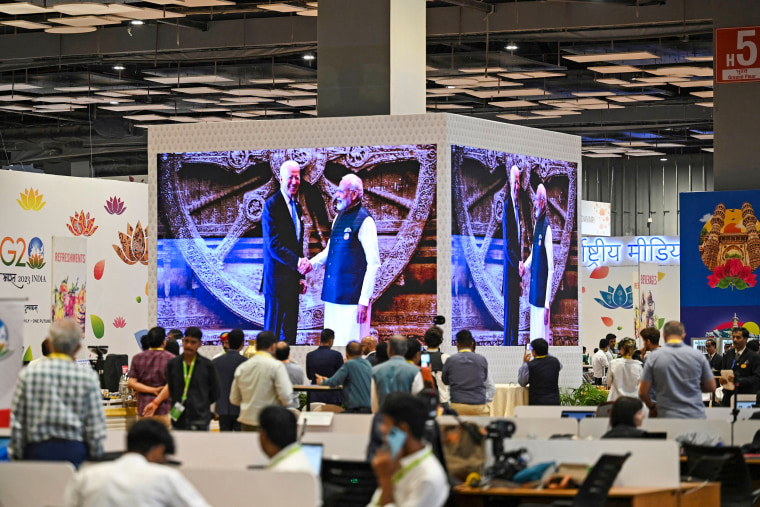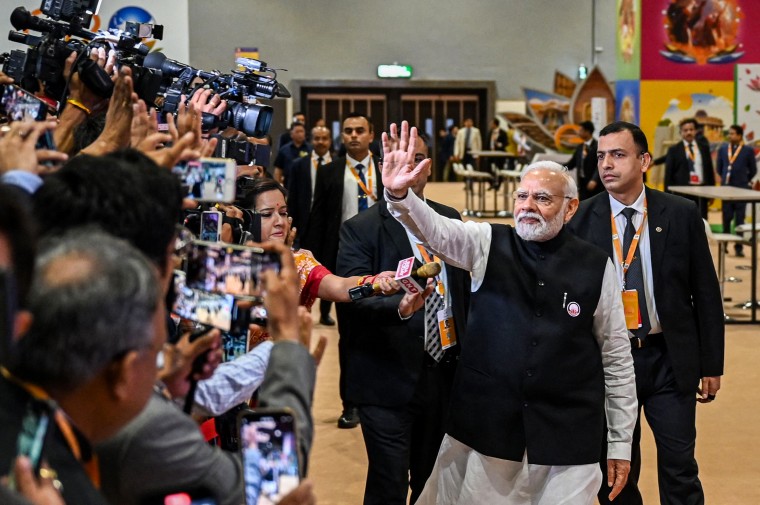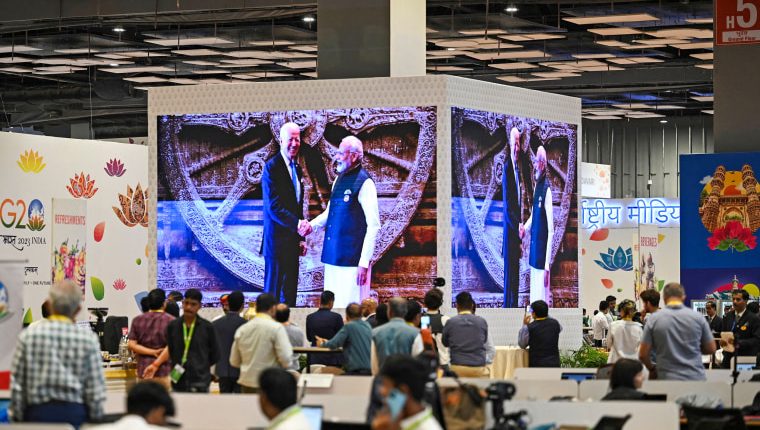NEW DELHI — Much of New Delhi came to a halt this weekend as presidents, prime ministers and monarchs descended on India’s capital for the Group of 20 summit.
The meeting of rich and developing nations showcased India’s burgeoning economic and geopolitical clout but also raised a growing critique of the country’s Hindu nationalist government, specifically, its approach to press freedom.
The world’s largest democracy has emerged as a partner to the U.S. and has promoted itself as a mediator between the West and Russia. It also provides an important counterweight to communist China’s flourishing ambitions.
Despite proclaiming itself “The Mother of Democracy” on posters across the capital, hundreds of journalists were largely kept away from the leaders they had traveled to cover at the summit, which wrapped up Sunday with President Joe Biden’s arrival in Vietnam.
In an extremely rare departure from the usual protocol, not a single independent journalist was allowed to cover Biden’s meeting with Indian Prime Minister Narendra Modi on Friday night. As a result, the only images of that meeting that will enter the historical record are from official government photographers.
With very few exceptions, when an American president holds a formal bilateral meeting with a fellow world leader, a “pool” of White House print and TV reporters and photographers are allowed to briefly cover, or “spray,” the start of the meeting. The rest of the meeting is then conducted in private.
Journalists often use those brief moments to shout questions at the leaders in the hope they might respond.
Major summits like the G20 often involve painstaking behind-closed-doors negotiations to produce official communiqués, whose language on important issues such as the war in Ukraine, and how that language was reached, is painstakingly scrutinized. This year India, the U.S. and the European Union also presented plans for a rail and shipping corridor between India, the Middle East and Europe.
U.S. National Security Adviser Jake Sullivan had earlier told reporters aboard Air Force One that the administration had requested access for the press pool.
“This is the host of the G20 hosting a significant number of leaders, doing so in his home, and he has set out the protocols he’s set out,” Sullivan said.
Sullivan said the administration had requested that journalists be given access as usual, but since the meeting was at Modi’s residence, the decision to bar the media was a “circumstance-based issue, not some larger issue.
“This is not your typical bilateral visit to India with meetings taking place in the prime minister’s office and an entire program,” Sullivan said. “This is the host of the G20 hosting a significant number of leaders, doing so in his home, and he has set out the protocols he’s set out.”
The deputy secretary of India’s Foreign Ministry, Vasudev Ravi, who was in charge of press relations at the International Media Center, declined to comment on the restrictions.

The administration’s handling of the Modi-Biden bilateral stood in stark contrast to how it dealt with a similar issue during the Association of Southeast Asian Nations summit in Jakarta, Indonesia, on Wednesday.
After the Indonesian security surrounded and then threatened to ban Voice of America reporter Patsy Widakuswara from entering the summit room after she shouted two questions at President Joko Widodo during a “spray,” U.S. officials pressured their Indonesian counterparts to let Widakuswara in.
Emphasizing the point, Vice President Kamala Harris refused to enter until the entire press pool, which included Widakuswara, was allowed into the room.
Ultimately, the Indonesians relented, and the questions went on as planned.
“It is a source of pride for us as American diplomats and civil servants to stand up for the freedom of the press overseas, and as part of that, for access for the traveling White House press corps,” Dean Lieberman, deputy national security adviser to the vice president, told VOA in a statement at the time.
A European delegation in New Delhi complained about the press restrictions put in place by Indian officials, saying that even photographers traveling with diplomats faced restrictions.
“It’s not the first time that India has caused problems. They just don’t want journalists close to the meetings,” an official from the delegation said at the summit.
“We had to push our arguments and they were eventually allowed,” the official, who spoke on condition of anonymity because the official was not authorized to speak publicly on sensitive issues, told NBC News.

Thapanut Nookuea, a correspondent for the Japanese broadcast network Nippon TV, said he and others were limited to official handouts and video feed of brief portions of meetings.
“Usually, they briefly let the media in to capture the moment,” he said.
Modi has never given a solo press conference since assuming office in 2014. Meanwhile, India ranks 161st out of 180 countries on this year’s World Press Freedom Index, down from 150th last year.
Ahead of a state visit to the U.S. in June, the Committee to Protect Journalists called on Biden’s government to urge India to end a media crackdown and release six detained journalists.
“Journalists critical of the government and the BJP party have been jailed, harassed, and surveilled in retaliation for their work,” CPJ President Jodie Ginsberg said in a statement, referring to Modi’s Bharatiya Janata Party.
To add insult to injury from the perspective of the members of the media trying to cover the G20, some of the dozens of volunteers from Delhi University who were assisting the police in guiding visitors around various venues had much better access to the main summit area than journalists did.
“We have teams at the main venue, around where Biden is staying and even around the prime minister’s office,” said economics student Sahil Pathak, 20, who was stationed at the stadium.
The White House Correspondents Association has issued no public comment on the situation.
Source: | This article originally belongs to Nbcnews.com









